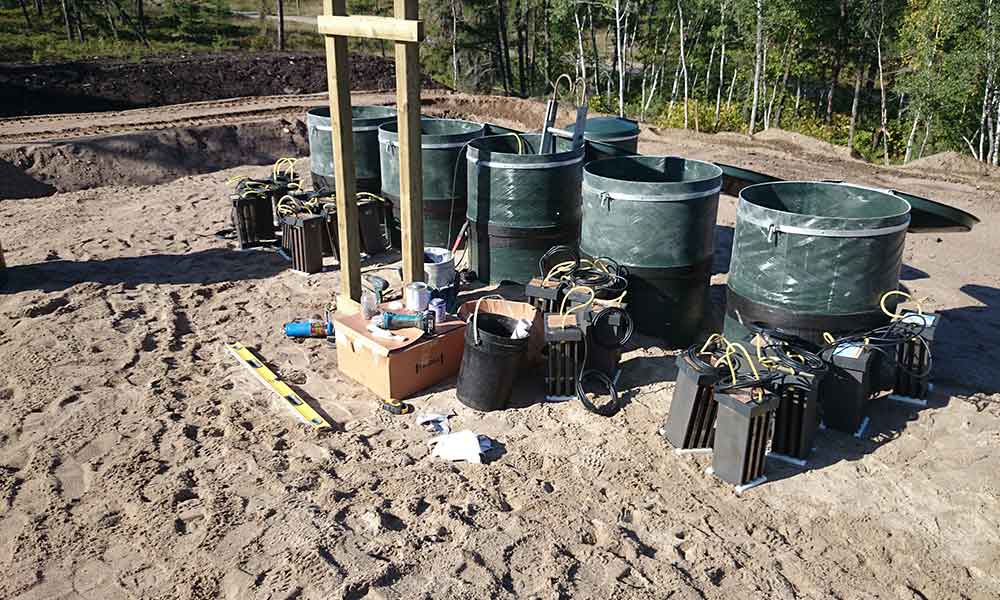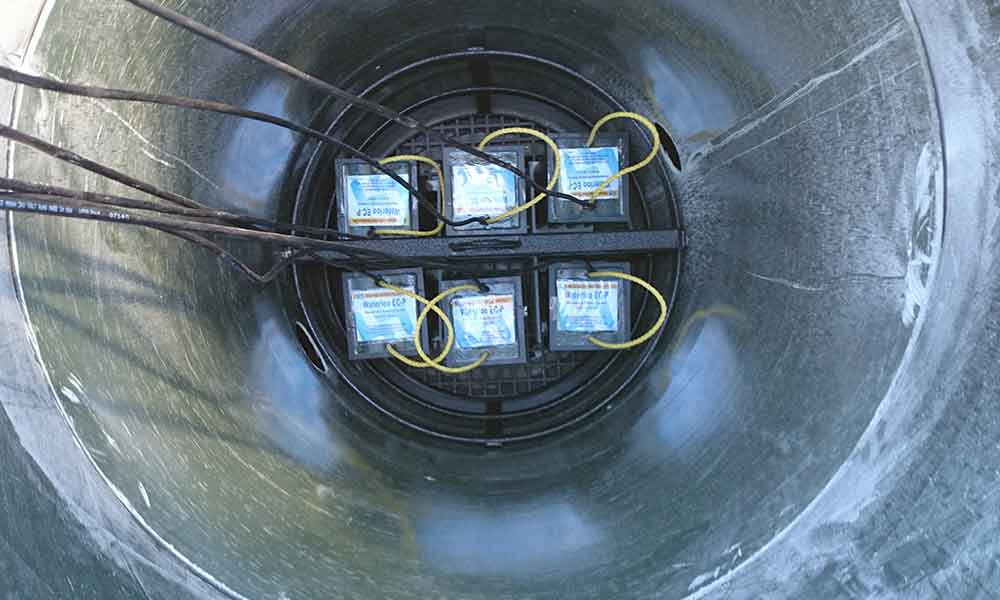Waterloo EC-P™ (Commercial)
Electrochemical phosphorus removal for commercial applications
The Waterloo EC-P™ is a patent-pending process for efficiently and permanently removing phosphorus from onsite septic systems. The Waterloo EC-P represents an entirely new phosphorus removal strategy that is ideally suited for use on small scale commercial septic systems. This process mimics the natural phosphorus removal of iron-rich ‘B-horizon’ soils by introducing iron to any naturally iron-free filtration media. With the Waterloo EC-P up to 99% of total phosphorus can be removed from septic systems.
How It Works
Through electrochemistry the Waterloo EC-P removes phosphorus by the precipitation of iron-phosphate minerals. Natural iron electrodes are installed in the septic tank or pump tank and a small current is applied to the electrodes. The iron is dissolved into the sewage stream where it reacts with phosphorus to form highly stable and insoluble iron-phosphate minerals. The Waterloo EC-P effluent is then passed through a filtration component, such as a Waterloo Biofilter treatment unit or conventional leach field or sand filter, where the iron-phosphate minerals precipitate out preventing phosphorus from reaching the natural environment. For larger flows multiple electrodes are installed in parallel.
The Waterloo EC-P is operated at a controlled rate dependent on the hydraulic flow, number of electrodes, expected concentration of total phosphorus, and the target phosphorus effluent limit. The Waterloo EC-P can be designed with fewer electrodes operating at higher intensity (more frequent electrode replacement) or with more electrodes operating at lower intensity (less frequent electrode replacement). Systems are typically designed for a 2-year electrode replacement schedule. Compared to conventional chemical addition systems the Waterloo EC-P provides more predictable performance at a much lower ongoing operating cost.
Product Benefits
No additional sludge production
No chemicals and their associated transport, storage, handling and dosing
Compact and easy to install
No effect on pH
Low energy consumption
Phosphorus is permanently contained in filtration medium rather than having to be treated again
Predictable performance
Abiotic and independent of temperature
Conventional Phosphorus Removal Methods
The controlled addition of aluminum, iron or calcium salts to wastewater removes phosphorus by chemical precipitation. Subsequent flocculation and settling of these precipitates prevents the phosphorus from being released into the environment. This process however has a number of drawbacks including increased sludge production (and tank pump outs) by up to 40%, high O&M costs related to chemical transportation, storage, handling, and dosing, as well as the need for large tanks or clarifiers for settling of solids. Depending on the chemical used, a pH buffering chemical may also be required. Additionally, the phosphorus-rich sludge must be pumped out and subsequently treated again at municipal wastewater treatment plants.



